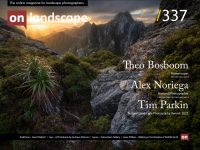An overview and a look at some of the entries

Tim Parkin
Tim Parkin is a British landscape photographer, writer, and editor best known as the co-founder of On Landscape magazine, where he explores the art and practice of photographing the natural world. His work is thoughtful and carefully crafted, often focusing on subtle details and quiet moments in the landscape rather than dramatic vistas. Alongside his photography and writing, he co-founded the Natural Landscape Photography Awards, serves as a judge for other international competitions. Through all these projects, Parkin has become a respected and influential voice in contemporary landscape photography.
It's the Natural Landscape Photography Awards time of year again, and we've spent the last few weeks making final decisions on winners during a long seven-hour judging session on Zoom. A big thank you to Matt Palmer from Australia, who had to stay up from midnight until the next morning in order to synchronise with the Europeans and Americans on our panel. The rest of our judging panel consisted of Jennifer Renwick from the US, Jack Lodge from the UK, Anna Morgan from Canada and Hougaard Malan from South Africa.
For those unaware of the competition, it's a business that myself, Matt Payne, Alex Nail and Rajesh Jyothiswaran set up in order to address the problems we saw with existing competitions, particularly those around rigorous checking of raw files to ensure that you can trust that a photograph actually represents what was in front of the photographer.
This year we were met with one of the best collection of images we've received since the start of the competition. 11,023 photographs from 1,134 photographers spread across 64 countries went through six stages of competition judging, all leading to that final seven-hour live round where we discussed 40 photographs, 10 projects and 10 nominees for Photographer of the Year.
It was a really good showing for female photographers with the top three awards, Photographer of the Year, Photograph of the Year and Project all represented.
We also awarded photographs in the Special Categories, which vary from year to year. This year's categories were Tropical Landscapes, Woodlands, Rocks and Geology, Mountains, Frozen Worlds, Desert Landscapes, Seascapes and the locally oriented "In your Backyard". We'll look at these awards in the next issue.
The awards have been talked about in some previous articles which you can find listed on this tag collection.
Photograph of the Year - Margrit Schwarz
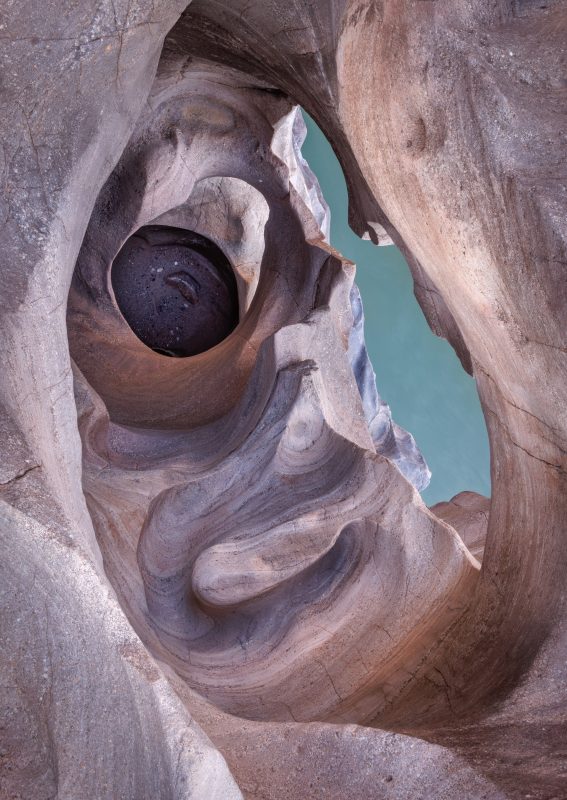
Photograph of the Year, Winner
Margrit Schwarz, CH
I made this photograph on the final morning of a twelve-day raft trip on the Colorado River. The Grand Canyon’s immensity was overwhelming, yet what captivated me most were the ancient layers of stone, shaped by time and water into abstract forms alive with mystery. For me, "Eye of the Canyon" remains an open invitation to explore, and to return - again and again.
Photographer of the Year - Joy Kachina, Tasmania
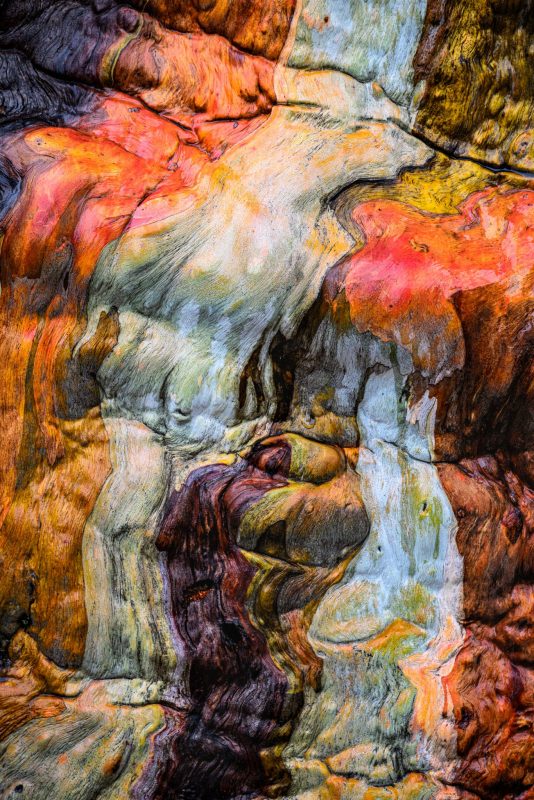
On Tasmania’s central plateau, the bark of the snowgum becomes a canvas alive with colour. Layers of ochre, green, blue, and crimson flow across the trunk in patterns reminiscent of cascading water or brushstrokes on a painting. This tree, affectionately called The Artist’s Palette, feels like nature’s own masterpiece, an abstract composition shaped not by hand, but by season, weather, and time.
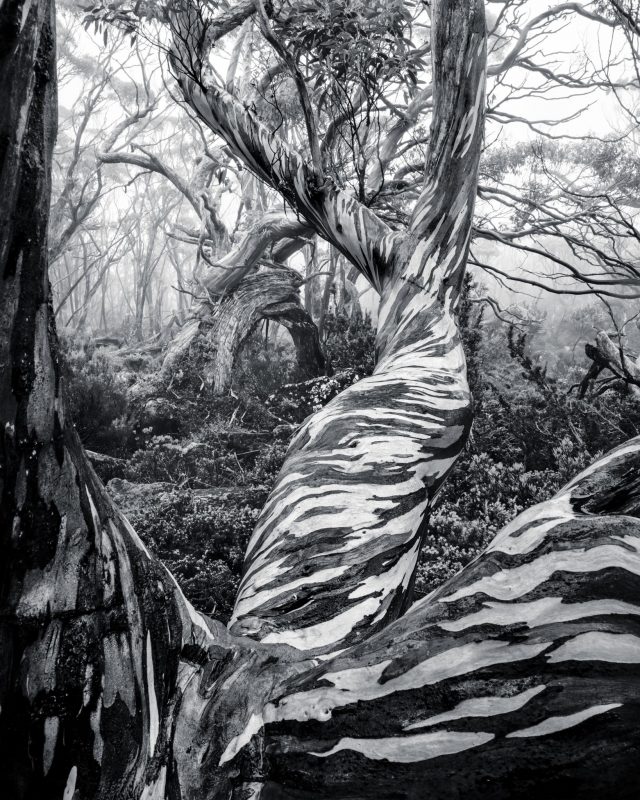
In Tasmania’s alpine highlands, the snowgums twist and turn in sculptural forms shaped by weather and time. To stand among them is to feel both endurance and grace. This photograph was created during a deeply personal journey, undertaken through physical challenge and resilience. Despite long hours of travel, harsh weather, and personal struggle, the moment of arrival brought profound peace. Here, in the presence of these ancient trees, the forest felt like home.
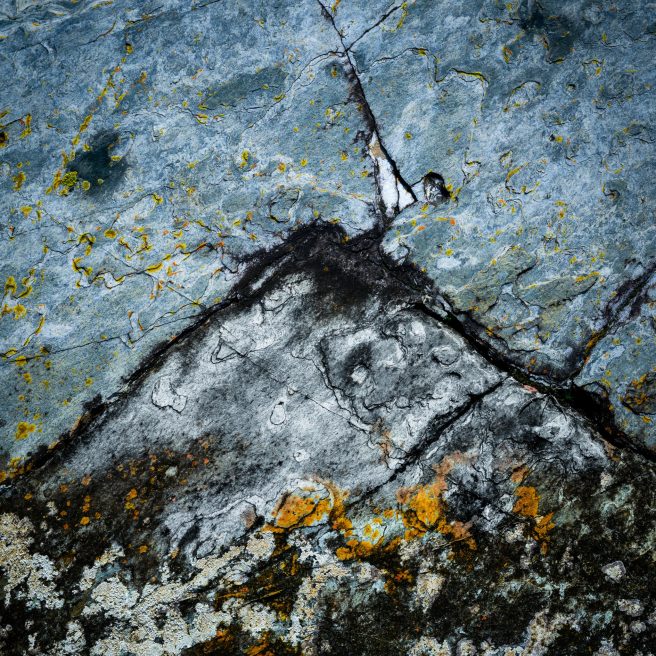
Along Tasmania’s rugged north-west coastline, the cliffs hold stories older than memory. In the etched surfaces of Devonian granite, one can see patterns that seem alive with the spirit of the Palawa people, whose connection to this land stretches back thousands of years. This abstract form felt like a vision from the elders, a spirit taking flight, carried on the wind, carved into stone. Standing before it, the landscape became more than rock and sea. For me it became a story of presence and a feeling of belonging to the landscape itself.
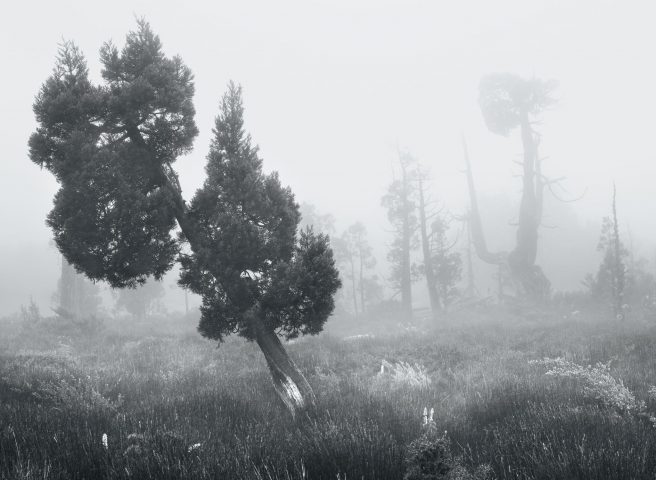
In Tasmania’s Central Plateau Conservation Area, the ancient Pencil Pines endure centuries of wind and weather, their twisted forms shaped by time. Some live for more than a thousand years, standing as guardians along tarns and waterways. This leaning tree, resilient yet graceful, reflects the quiet acceptance of difference, its tilt a reminder that there is beauty in standing apart, and being authentically, you.
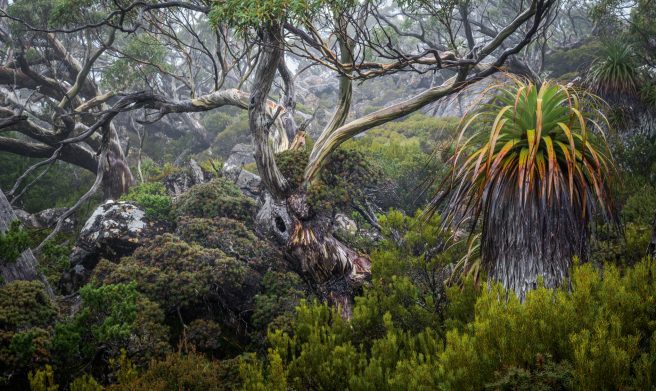
In Tasmania’s alpine regions, snowgums and pandani stand side by side in striking contrast, their forms shaped by the elements yet harmonious in their coexistence. Together they create a natural gallery, where diverse plant communities thrive in balance. This moment, discovered on a mountain hike, captures the quiet beauty of resilience and interconnection in the wild. It is a reminder that life’s richest experiences are often found in the unassuming harmony of nature.
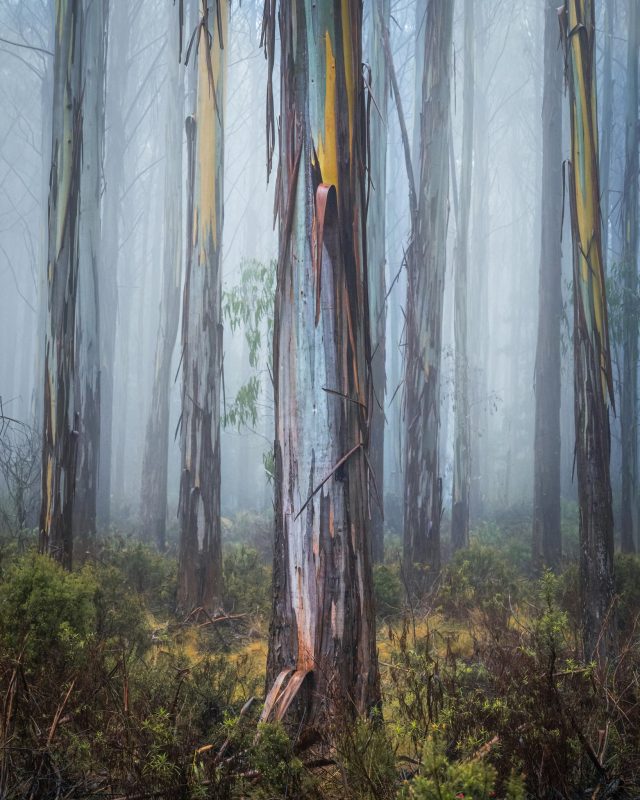
In Tasmania’s subalpine forests, autumn strips away old bark to reveal new layers, alive with shifting colours and textures. This seasonal renewal captures both the fragility and resilience of the eucalypt, offering a quiet reminder of belonging and the deep sense of home I find in these woods.
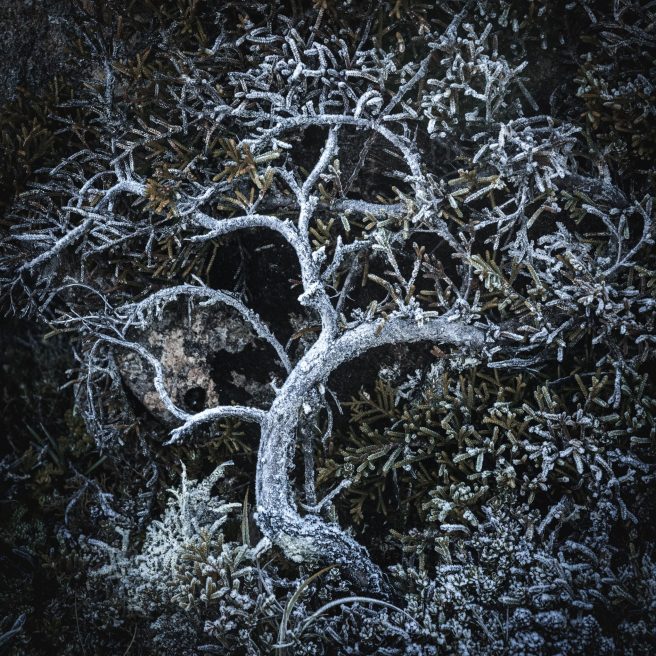
On a frosty morning in Tasmania’s alpine wilderness, the Tarn Shelf reveals quiet details often overlooked. Here, a small shrub, encased in ice, takes on the form of an abstract sculpture. The branches, bent and silvered with frost, stand suspended in time before the rising sun melts them back into motion. This fleeting moment of stillness is both fragile and enduring, a reminder that beauty often lies in the smallest, most transient details of the landscape.

